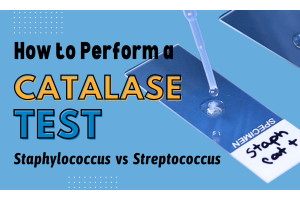In recent years, greater appreciation for microbes inhabiting human body sites has emerged. In the female mammary gland, milk has been shown to contain bacterial species, reaching the ducts from the skin. Researchers have also discovered a diverse population of bacteria within tissue collected from sites all around the breast in women ages 18 to 90, not all of whom had a history of lactation.
Research shows that breast tissue is not sterile but contains a diverse community of bacteria. It has been proposed that the breast microbiome contributes to maintenance of healthy breast tissue by stimulating resident immune cells, but the type of bacteria and their metabolic activity, such as the ability to degrade carcinogens, may also contribute.
Urbaniak cultured breast tissue from women aged 18 to 90 in Canada and Ireland. The most abundant taxa in the Canadian samples were Bacillus (11.4%), Acinetobacter (10.0%), Enterobacteriaceae (8.3%), Pseudomonas (6.5%), Staphylococcus (6.5%), Propionibacterium (5.8%), Comamonadaceae (5.7%), Gamma-proteobacteria (5.0%), and Prevotella (5.0%). In the Irish samples, the most abundant taxa were Enterobacteriaceae (30.8%), Staphylococcus (12.7%), Listeria welshimeri (12.1%), Propionibacterium (10.1%), and Pseudomonas (5.3%). None of the subjects had signs or symptoms of infection, but the presence of viable bacteria was confirmed in some samples by culture. The extent to which these organisms play a role in health or disease remains to be determined.

Fig 1: Locations within the breast of tissue samples were collected for bacterial analysis. (A and B) Locations of tissue collected from women undergoing lumpectomies or mastectomies for either malignant (A) or benign (B) tumors. (C) Locations of tissue collected from women undergoing lumpectomies or mastectomies for malignant tumors. Blue ovals represent the location of a tumor, and purple squares represent the location of the specimen obtained for bacterial analysis. (D) Locations of tissue collected from women undergoing breast reduction surgery. All specimens were obtained from a variety of locations within the breast.
However, scientists have uncovered a potential role of bacteria found within breast tissue in the prevention and progression of breast cancer. Studies show that healthy breast tissue has a higher abundance of beneficial bacteria, while women with breast cancer have a higher relative abundance of Enterobacteriaceae, Staphylococcus, and Bacillus. This suggests that the microbiome may shift as a result of disease.
Furthermore, certain bacteria found to be linked to a higher level of DNA damage in vitro could be detected among the samples from breast cancer patients compared with those from healthy patients. The extent to which these organisms play a role in health or disease remains to be determined.
Further work confirms the existence of significant differences in the microbial composition of the breast tissue micro-environment in patients with benign versus malignant disease. While it is unclear whether small shifts in microbial communities or the presence of a virulent pathogenic strain or absence of a beneficial one might be responsible for promoting carcinogenesis, these findings support further investigations. Differences in the microbiome have been implicated in cancer development at a variety of body sites, including the stomach, colon, liver, lung and skin. There is mounting evidence that changes in the breast microbiome may be implicated in cancer development.
Further studies are warranted to determine how the breast microbiome is established, why colonization may change with disease, what impact these organisms have on the host, and whether external factors such as diet, antibiotics, and illness affect this bacterial community and the subsequent consequences for women.
1. Hieken, T. et al., The Microbiome of Aseptically Collected Human Breast Tissue in Benign and Malignant Disease, Scientific Reports 6, Article number :30751 (2016).
2. Urbaniak et al., Microbiota of Human Breast Tissue, Applied and Environmental Microbiology, May 2014 vol 80 no 10 3007-3014.
By Corrie Landymore-Dodson
 Fig 1: Locations within the breast of tissue samples were collected for bacterial analysis. (A and B) Locations of tissue collected from women undergoing lumpectomies or mastectomies for either malignant (A) or benign (B) tumors. (C) Locations of tissue collected from women undergoing lumpectomies or mastectomies for malignant tumors. Blue ovals represent the location of a tumor, and purple squares represent the location of the specimen obtained for bacterial analysis. (D) Locations of tissue collected from women undergoing breast reduction surgery. All specimens were obtained from a variety of locations within the breast.
Fig 1: Locations within the breast of tissue samples were collected for bacterial analysis. (A and B) Locations of tissue collected from women undergoing lumpectomies or mastectomies for either malignant (A) or benign (B) tumors. (C) Locations of tissue collected from women undergoing lumpectomies or mastectomies for malignant tumors. Blue ovals represent the location of a tumor, and purple squares represent the location of the specimen obtained for bacterial analysis. (D) Locations of tissue collected from women undergoing breast reduction surgery. All specimens were obtained from a variety of locations within the breast.






